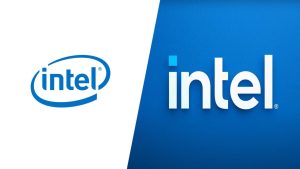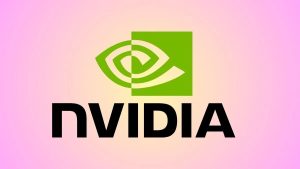On page SEO optimization is a cornerstone in the ever-evolving landscape of digital marketing, playing a pivotal role in determining a website’s ranking on search engine results pages (SERPs). Among the various facets of SEO, it remains a critical aspect for businesses aiming to enhance their online presence and visibility. In this article, we delve into the fundamentals of on page SEO, providing insights into its importance, key elements, checklist, implementation strategies, and more.
Introduction to On Page SEO
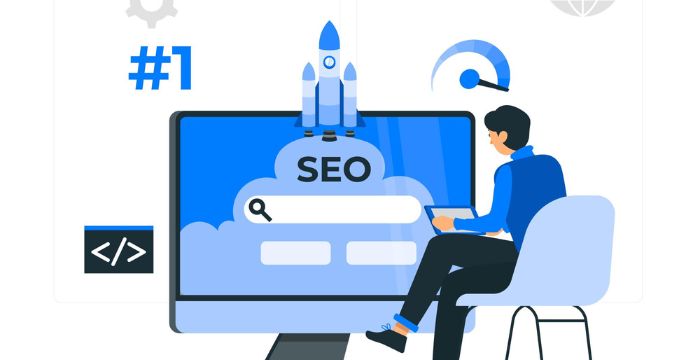
What is On Page SEO?
On page SEO refers to the practice of optimizing individual web pages to improve their search engine rankings and attract organic traffic. Unlike off-page SEO, which focuses on external factors such as backlinks and social signals, on page SEO involves optimizing elements directly within the website’s control.
Importance of On Page SEO in 2024
In 2024, with search engines becoming increasingly sophisticated, on page optimization continues to be a crucial factor for ranking well in search results. By optimizing on-page elements effectively, businesses can enhance their visibility, attract relevant traffic, and ultimately drive conversions.
Understanding On Page SEO Elements
Successful on page optimization encompasses various elements, each contributing to the overall visibility and relevance of a webpage.
Title Tags and Meta Descriptions

Title tags and meta descriptions serve as the first point of contact between a website and its potential visitors. Optimizing these elements involves incorporating relevant keywords, crafting compelling copy, and adhering to character limits to maximize click-through rates.
URL Structure Optimization
A well-structured URL not only enhances user experience but also provides search engines with valuable information about the content of a webpage. Optimizing URLs involves using descriptive keywords, avoiding unnecessary parameters, and maintaining a logical hierarchy.
Header Tags (H1, H2, H3, etc.)
Header tags play a crucial role in organizing content and signaling its importance to search engines. By strategically utilizing H1, H2, and H3 tags, website owners can structure their content in a hierarchical manner, making it more accessible and comprehensible to both users and search engine crawlers.
Content Optimization
Compelling and informative content lies at the heart of on page SEO. Content optimization involves creating high-quality, relevant, and engaging copy that addresses the needs and queries of the target audience. Incorporating relevant keywords naturally within the content, while ensuring readability and coherence, is essential for maximizing its impact on search rankings.
Image Optimization
Images not only enhance the visual appeal of a webpage but also contribute to its SEO performance. Image optimization involves using descriptive file names and alt tags to provide context to search engines. Additionally, optimizing image size and format can help improve page load times, thereby enhancing user experience and SEO.
Internal Linking
Internal linking plays a crucial role in establishing website structure and distributing link equity across various pages. By strategically linking to relevant internal pages within the content, website owners can facilitate navigation, improve crawlability, and strengthen the overall SEO performance of their site.
User Experience and Page Speed
User experience (UX) and page speed are integral components of on page SEO, directly impacting user engagement and search engine rankings. Optimizing for UX involves ensuring intuitive navigation, mobile responsiveness, and accessibility, while improving page speed requires minimizing load times through techniques such as image optimization, browser caching, and code minification.
On Page SEO Checklist for 2024
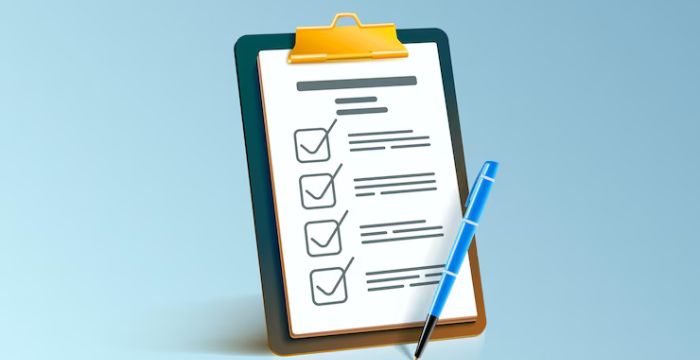
As the digital landscape continues to evolve, staying updated with the latest on page SEO best practices is essential for maintaining a competitive edge. Below is a comprehensive checklist outlining key elements and strategies for effective on-page optimization in 2024:
Title Tags and Meta Descriptions Optimization
- Craft unique and descriptive title tags for each webpage, incorporating primary keywords.
- Keep title tags within the recommended character limit to ensure visibility in search results.
- Write compelling meta descriptions that accurately summarize the content and encourage clicks.
URL Structure
- Avoid using dynamic URLs with parameters whenever possible.
- Ensure URLs are readable and user-friendly, facilitating navigation and comprehension.
- Implement 301 redirects for outdated or broken URLs to maintain SEO equi
Header Tags Optimization
- Utilize a clear hierarchy of header tags (H1, H2, H3, etc.) to structure content logically.
- Include primary keywords in H1 tags to signal the main topic of the page.
- Use subheadings (H2, H3, etc.) to organize content into sections and improve readability.
Content Optimization Strategies
- Conduct thorough keyword research to identify relevant terms and phrases.
- Integrate primary and secondary keywords naturally throughout the content.
- Aim for comprehensive, informative, and engaging copy that satisfies user intent.
- Break up text with bullet points, numbered lists, and multimedia elements to enhance readability.
Image Optimization Techniques
- Choose appropriate file formats (e.g., JPEG, PNG) based on image type and quality requirements.
- Compress images to reduce file size without sacrificing visual quality.
- Use descriptive filenames and alt text to provide context for search engines and visually impaired users.
- Implement lazy loading to prioritize loading visible content first, improving page speed.
Internal Linking Best Practices
- Identify opportunities to link internally to relevant pages within the website.
- Use descriptive anchor text that accurately reflects the linked page’s content.
- Ensure a natural flow of internal links within the content, avoiding excessive linking.
Enhancing User Experience and Page Speed
- Optimize website design for mobile devices, prioritizing responsive and mobile-friendly layouts.
- Minimize server response times by leveraging caching mechanisms and optimizing server configurations.
- Compress CSS, JavaScript, and HTML files to reduce page size and improve loading times.
- Prioritize above-the-fold content to ensure fast initial rendering and engagement.
Implementing On Page SEO: Step-by-Step Guide
Now that we’ve outlined the key elements and strategies for on page SEO, let’s delve into a step-by-step guide on how to implement these practices effectively:
Keyword Research and Selection
Before optimizing any webpage, it’s essential to conduct thorough keyword research to identify relevant terms and phrases that align with your target audience’s search intent. Utilize keyword research tools such as Google Keyword Planner, SEMrush, or Ahrefs to discover high-volume keywords, long-tail variations, and related terms. Focus on identifying keywords with moderate to high search volume and relatively low competition to maximize your chances of ranking.
Creating Compelling Titles and Meta Descriptions
Once you’ve identified your target keywords, craft compelling titles and meta descriptions that not only incorporate these keywords but also entice users to click through to your webpage. Your title tag should accurately reflect the content of the page while incorporating primary keywords near the beginning. Keep your titles concise, ideally under 60 characters, to ensure they display fully in search results. Similarly, write concise meta descriptions (under 160 characters) that provide a brief summary of the page’s content and encourage users to click.
Optimizing URL Structure
Next, optimize your URL structure to make it both user-friendly and search engine-friendly. Create descriptive URLs that contain relevant keywords and accurately reflect the content of the page. Avoid using dynamic URLs with unnecessary parameters, and aim to keep your URLs short and readable. Implement 301 redirects for any outdated or broken URLs to ensure a seamless user experience and preserve SEO equity.
Crafting Engaging Header Tags
Structure your content using clear and hierarchical header tags (H1, H2, H3, etc.) to improve readability and signal the importance of different sections to search engines. Your H1 tag should typically contain the main topic or keyword of the page, while subsequent header tags can be used to organize subtopics or sections. Use descriptive and keyword-rich headings to provide context and guide users through your content effectively.
Writing SEO-friendly Content
When writing your content, focus on creating high-quality, informative, and engaging copy that addresses the needs and interests of your target audience. Incorporate your target keywords naturally throughout the content, but avoid keyword stuffing or sacrificing readability for the sake of SEO. Aim to provide valuable information, answer common questions, and solve problems for your audience, positioning yourself as a trusted resource in your industry.
Optimizing Images with Alt Text and File Names
Don’t forget to optimize your images for search engines by using descriptive file names and alt text. Choose descriptive filenames that accurately describe the content of the image and incorporate relevant keywords where appropriate. Additionally, write concise and descriptive alt text for each image to provide context for visually impaired users and help search engines understand the content of the image.
Implementing Internal Linking Strategies
Internal linking is a crucial aspect of on page SEO that helps establish website structure, distribute link equity, and improve navigation for users. Identify opportunities to link to other relevant pages within your website using descriptive anchor text. When linking internally, aim to create a natural flow of links that enhances the user experience and guides visitors to related content or conversion points.
Improving User Experience and Page Speed
Finally, prioritize user experience and page speed to ensure that your website delivers a seamless and engaging browsing experience for visitors. Optimize your website design for mobile devices, prioritize above-the-fold content to ensure fast initial loading, and minimize server response times by leveraging caching mechanisms and optimizing server configurations. Additionally, compress CSS, JavaScript, and HTML files to reduce page size and improve loading times, and implement lazy loading to prioritize loading visible content first.
By following these step-by-step guidelines and implementing best practices for on page SEO, you can optimize your website to improve its visibility, attract organic traffic, and ultimately drive conversions in 2024 and beyond.
Advanced Tips and Techniques for On Page SEO
While the basics of on page SEO are essential for establishing a strong foundation, there are also advanced techniques and strategies that can further enhance your website’s search engine visibility and performance. Let’s explore some of these advanced tips:
Schema Markup Implementation
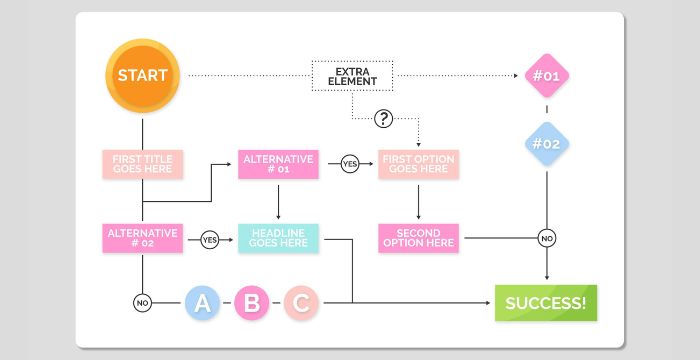
Schema markup, also known as structured data markup, is a form of microdata that helps search engines understand the content of a webpage more effectively. By implementing schema markup on your website, you can provide search engines with additional context about your content, such as product information, reviews, events, and more. This can result in enhanced search engine results, including rich snippets, knowledge panels, and other rich features that can improve visibility and click-through rates.
Voice Search Optimization
With the increasing prevalence of voice-activated devices and virtual assistants like Siri, Alexa, and Google Assistant, optimizing your website for voice search has become increasingly important. Voice search queries tend to be more conversational and long-tail in nature, so focus on creating content that answers specific questions and provides concise, natural language responses. Additionally, optimize your website for local search by including location-specific keywords and information, as many voice searches are location-based.
Mobile Optimization
As mobile usage continues to rise, ensuring that your website is optimized for mobile devices is crucial for both user experience and search engine rankings. Adopt a responsive web design approach to ensure that your website displays properly and functions seamlessly across various screen sizes and devices. Pay attention to factors such as page load speed, navigation, and readability on mobile devices to provide a smooth and intuitive browsing experience for mobile users.
E-A-T (Expertise, Authoritativeness, Trustworthiness)
Google places a high emphasis on E-A-T (Expertise, Authoritativeness, Trustworthiness) when evaluating the quality and relevance of web content. To improve your website’s E-A-T score, focus on demonstrating expertise in your field by providing accurate and comprehensive information, showcasing credentials and certifications, and featuring content from reputable sources. Establish authority by building high-quality backlinks from authoritative websites within your industry, and instill trustworthiness by ensuring transparency, credibility, and reliability in your content and business practices.
Featured Snippets Optimization
Featured snippets are selected search results that are displayed at the top of Google’s organic search results in a box, providing users with a concise answer to their query extracted from a webpage. Optimizing your content for featured snippets can significantly increase your visibility and drive more organic traffic to your website. To optimize for featured snippets, identify commonly asked questions related to your niche and create content that provides clear and concise answers. Format your content in a way that is easy for search engines to understand, such as using bullet points, numbered lists, and tables, and include relevant keywords and phrases in your headings and subheadings.
By incorporating these advanced tips and techniques into your on page SEO strategy, you can further enhance your website’s visibility, relevance, and authority in the eyes of search engines, ultimately driving more organic traffic and achieving better results in 2024 and beyond.
Measuring and Analyzing On Page SEO Performance
Once you’ve implemented your on page SEO strategies, it’s essential to monitor and analyze your website’s performance to identify areas for improvement and track your progress over time. Here are some key metrics to consider when measuring the effectiveness of your on page SEO efforts:
Organic Traffic
Organic traffic refers to the number of visitors that come to your website through unpaid search engine results. Monitor your website’s organic traffic using tools such as Google Analytics to track changes in traffic volume over time and identify trends. Analyze which pages are driving the most organic traffic and optimize them further to capitalize on their success. Additionally, track the performance of specific keywords and landing pages to gauge the effectiveness of your on page SEO efforts.
Keyword Rankings
Monitor your website’s keyword rankings to assess its visibility in search engine results pages (SERPs). Track the positions of your target keywords using SEO tools like SEMrush, Ahrefs, or Moz, and identify opportunities to improve rankings for high-priority keywords. Keep an eye on fluctuations in rankings and adjust your on-page optimization strategies accordingly to maintain or improve your positions in search results.
Click-Through Rate (CTR)
Click-through rate (CTR) measures the percentage of users who click on your website’s link in search engine results pages (SERPs) relative to the total number of impressions. Analyze your website’s CTR for different search queries and pages to assess their effectiveness in attracting clicks. Optimize your title tags, meta descriptions, and rich snippets to entice users to click on your links and improve your CTR.
Bounce Rate
Bounce rate indicates the percentage of visitors who navigate away from your website after viewing only one page. A high bounce rate may indicate that users are not finding the information they’re looking for or that your website’s content is not engaging enough. Analyze your website’s bounce rate for different pages and identify areas for improvement. Improve the quality and relevance of your content, enhance user experience, and optimize page load times to reduce bounce rates and encourage visitors to explore further.
Dwell Time
Dwell time, also known as time on page, measures the amount of time visitors spend on your website before returning to search results or navigating away. Analyze your website’s dwell time for different pages to assess the quality and relevance of your content. Create engaging, informative, and visually appealing content that encourages visitors to spend more time on your website. Incorporate multimedia elements such as videos, images, and interactive features to enhance user engagement and prolong dwell time.
FAQs (Frequently Asked Questions)
On page SEO refers to optimizing elements directly within a website, such as content, meta tags, and internal linking, to improve its search engine visibility and relevance. Off-page SEO, on the other hand, involves optimizing external factors such as backlinks, social signals, and online reputation to enhance a website’s authority and credibility in the eyes of search engines.
It’s essential to regularly review and update your website’s on page SEO to stay current with industry trends, algorithm changes, and user behavior. Aim to conduct a comprehensive audit of your on page SEO at least once every few months to identify any areas for improvement and implement necessary updates. Additionally, monitor your website’s performance metrics on an ongoing basis and adjust your on-page optimization strategies accordingly to maintain or improve your search engine rankings.
Some of the most important on page SEO elements include:
- Title tags and meta descriptions
- URL structure
- Header tags (H1, H2, H3, etc.)
- Content optimization
- Image optimization
- Internal linking
- User experience and page speed
These elements play a crucial role in determining a website’s visibility, relevance, and authority in search engine results pages (SERPs), so it’s essential to optimize them effectively for better SEO performance.
The timeline for seeing results from on page SEO efforts can vary depending on various factors, including the competitiveness of your industry, the quality of your content, the authority of your website, and the effectiveness of your optimization strategies. In general, you may start to see improvements in your search engine rankings and organic traffic within a few weeks to a few months after implementing on page SEO changes. However, it’s important to remember that SEO is a long-term strategy, and significant results may take time to manifest fully.
Some common on page SEO mistakes to avoid include:
- Keyword stuffing: Overusing keywords in your content to manipulate search engine rankings can result in a poor user experience and penalties from search engines.
- Thin content: Publishing low-quality or shallow content that provides little value to users can negatively impact your website’s search engine rankings.
- Ignoring mobile optimization: With the increasing prevalence of mobile devices, failing to optimize your website for mobile users can lead to lower search engine rankings and decreased user engagement.
- Neglecting technical SEO: Technical issues such as broken links, slow page speed, and improper canonicalization can hinder your website’s search engine performance.


